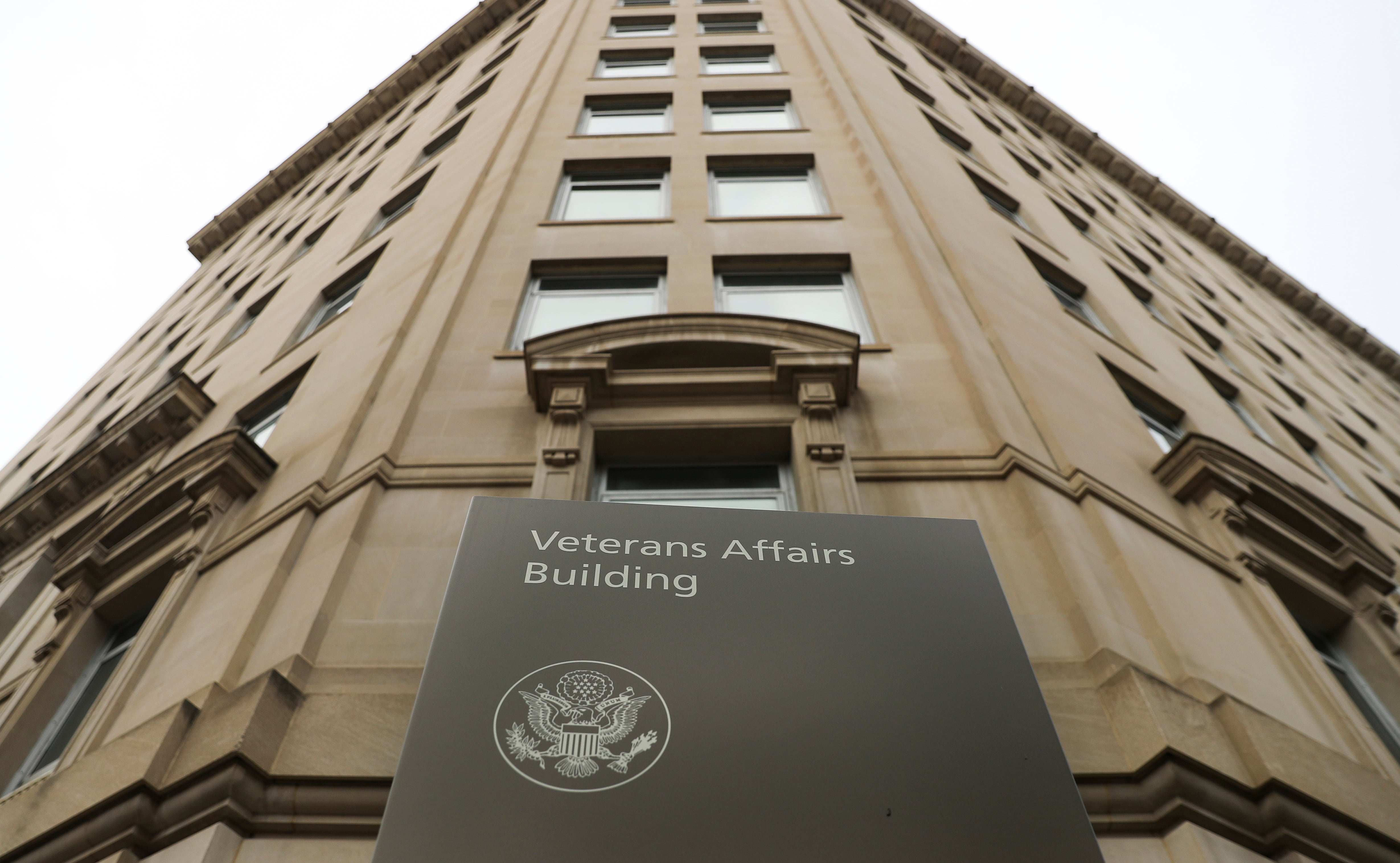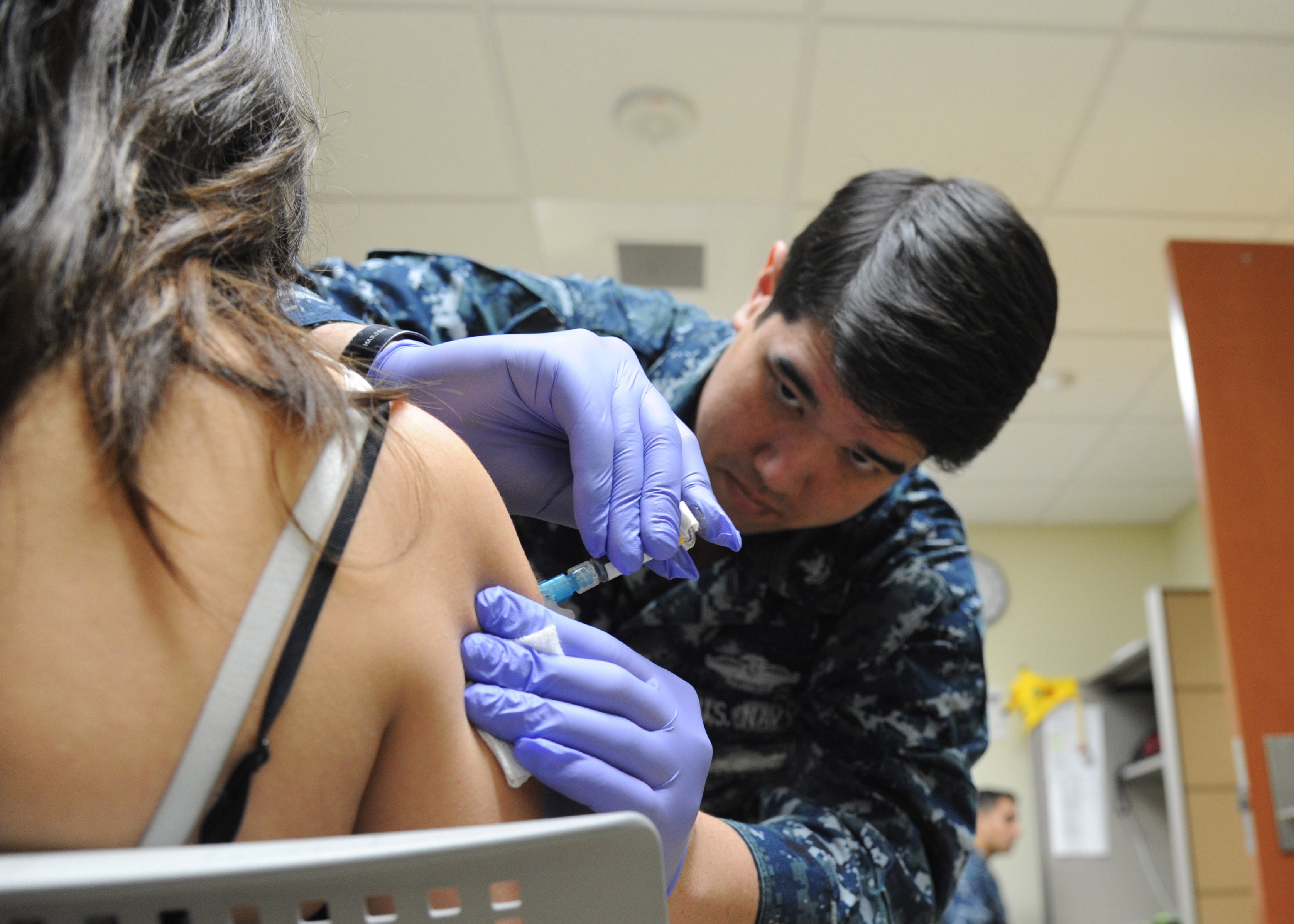NORFOLK NAVAL BASE, Va. — Changes to rating names, personnel evaluations, and concealed carry rules were top issues as the service's top officer and enlisted sailor took questions during an all-hands call held here on Feb. 24.
Roughly 1,200 sailors turned out to hear from Chief of Naval Operations Adm. John Richardson and Master Chief Petty Officer of the Navy Mike Stevens, and it was only a matter of minutes before the renaming of rates was raised.
The CNO quickly handed off to MCPON, who suggested the hot-button issue was much ado about nothing. He pointed out the Navy has stood up, stood down, or changed the name of rates more than 750 times, to the surprise of many in attendance. The last big change was in 1947 when the Navy reduced from more than 400 rates down to 100. There are 91 rates today.
Stevens said the goal is not only to remove "man" from a rate title, but to make sure a new title best defines the rate, can easily translate in the civilian sector, and retains a nautical feel. He then challenged a female to come up with a new title for her rate within those guidelines.
Yeoman Third Class Amber Roberts came up with the title "administrative specialist," which received a thunderous round of applause. MCPON Stevens said the exact same name had recently been suggested to him — by a team of 10 force master chiefs. To be on par with such a group earned Roberts a MCPON coin.
"I don't have a problem with changing the names as long as it is done in a professional manner," Roberts later told Navy Times. "Some of the names I have heard are not professional. I have heard 'yeomate," which a lot of us take offense to." While she is in agreement with the pending change, Roberts expressed concern that some things will be taken too far and some traditions may be lost.
Leadership development was a hot topic for CNO Richardson, who expressed a desire to ensure "behaviors align with values."
"I'm interested in exploring how we capture that in our evaluation system, particularly in our senior and leadership positions," he said. "It is extremely important to me that our leaders are people of solid and sound character."
MCPoN Stevens pointed to an anonymous peer evaluation program used at Basic Underwater Demolition/SEAL, or BUDS school. Stevens said he used a similar approach within the chief’s mess with much success.
"Nobody knows better what people are doing … than the people they work with every day," he said. "To evaluate one another like that maybe has some merit."

Chief of Naval Operations (CNO) Adm. John Richardson and Master Chief Petty Officer of the Navy (MCPON) Mike Stevens answer questions from sailors during a Feb. 18, 2016, all-hands call in Naval Base San Diego.
Photo Credit: MC3 Trevor Kohlrus/Navy
The leaders said they are looking at whether sailors should be allowed to carry personal weapons on base. Though the Air Force has already given the green light, CNO Richardson said questions must be answered before any change is made on Navy bases. For example, identifying an active shooter when a number of people have weapons drawn could be complicated, he said.
A quick survey found that the majority of sailors in attendance were not fans of the new Meritorious Advancement Program. Stevens suggested the Navy needs to do a better job of explaining the program, which is designed to give commanders more say in promotions.
More than 400 Command Advancement Program promotions went unused annually, MCPoN Stevens said, while 99 percent of MAP quotas are being used.
Sailors also voiced frustration with the Personnel Support Detachment model. Stevens admitted "it hasn't worked out as well as we wanted it to," and said he has people looking at improvements in automation and training, and better access for admin personnel.
Sailors were happy when Richardson said all planned deployments will be capped at seven months by year's end, but was quick to add that ships must complete the maintenance phase on time to keep that pace, and emerging missions could prolong deployment length.





